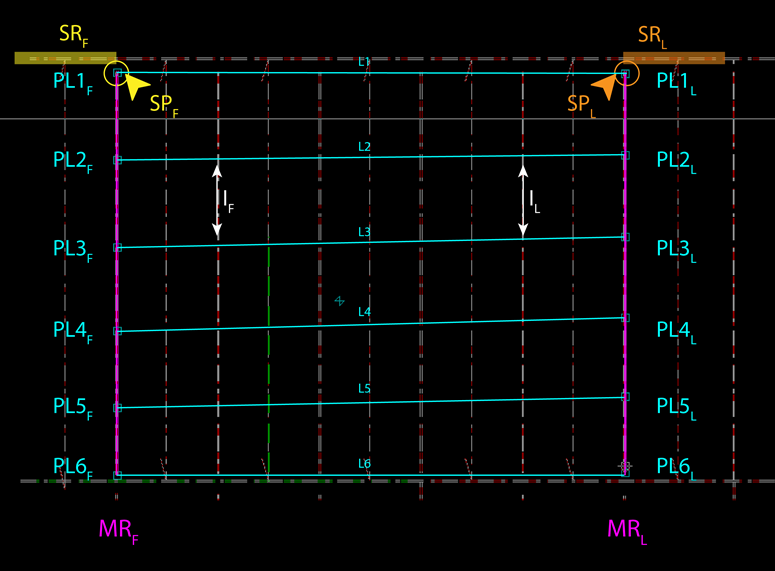Using an increment
You can use an increment both as a first and last method in the Pattern tab by adding a value in the Increment field. By default this field will be filled with 1000, but the user can adjust the values. This option specifies the distance between the points of the hull lines along the main relations. The image below shows the increment between the points on the hull lines.

Abbreviations on the image above:
| MRF | first main relation |
| MRL | last main relation |
| SRF | first start relation |
| SRL | last start relation |
| SPF | first start position |
| SPL | last start position |
| PLXF | first point of hull line X |
| PLXL | last point of hull line X |
| LX | hull line X |
| IF | increment: distance between first points of hull lines |
| IL | increment: distance between last points of hull lines |
How the system calculates with increments
The first and last points of the first full line can be computed by movement along relation with a value of distance from the first start relation (SRF), or, respectively, last start relation (SRL).
The first hull line is therefore always topological with respect to the main-first (MRF) and main-last (MRL) relations, and with the other 2 user-defined relations, start-relation first (SRF) and start-relation last (SRL).
The first and last points of the rest of the hull lines are computed based on the previous lines:
All hull lines from the second on are computed based on the previous one.
- first-point = intersection (first line, main-first relation)
To create a relation to the first line, the first point is used as indicated point - last-point = intersection(first line, main-last relation)
To create a relation to the first line, the last point is used as indicated point
Therefore, the topology is also created with respect to the previous line and the main relations.
First points are calculated as follows:
The current first point = previous first point moved along main-start relation with distance step:
PLXF = (PLX-1F + IF) along MRF
In case the main relation (MRF) is too short and the movement along the relation results in a point outside the relation, the points are considered invalid. The user can change the settings such as distance step or the number of hull lines to obtain valid points.
Last points are calculated the same as first points by using data defined for last points.
Go to Using an end relation and Using an end of main relation to learn about the two other methods in the Pattern tab.